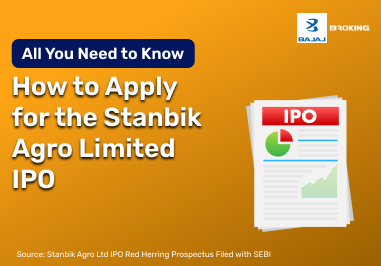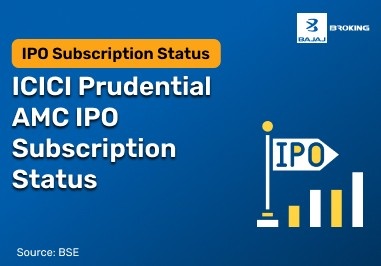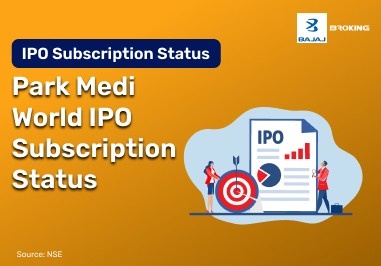By selling the call, the trader is obligated to sell the asset at the strike price if the option is exercised while selling the put obligates them to buy the asset at the same strike price if the put is exercised. The goal is to profit from the premiums earned by selling both options, capitalizing on the expected price stability.
The maximum profit in a short straddle strategy occurs when the underlying asset’s price remains precisely at the strike price, as both the call and put expire worthless. However, this strategy carries significant risk because unlimited losses can occur if the asset’s price makes a substantial move in either direction. To manage risk, traders often implement stop-loss orders or adjustments as the position unfolds.
How the Short Straddle Options Strategy Works?
In a short straddle strategy, a trader sells a call option and a put option with identical strike prices and expiration dates. This strategy generates two premiums upfront—one from the call and one from the put. If the underlying asset remains close to the strike price by expiry, both options may expire worthless or with minimal value, allowing the net premium to be retained.
The strategy operates under the assumption that the asset will not make significant upward or downward movements during the life of the options. However, in case of high volatility or sharp directional movement, the strategy can result in losses, especially since the potential loss on the short call is theoretically unlimited.
A Short Straddle Options Strategy involves selling both a call and a put option with the same strike price and expiration date. Here’s how it works:
Option Selection: Choose an underlying asset and determine your outlook. A short straddle option is best used when you expect low price volatility, as it profits from price stability.
Strike and Expiration: Select an appropriate strike price and expiration date. The strike price should typically be at or near the current market price of the asset, and both the call and put options should have the same strike and expiration.
Option Selling: Sell both the call and put options simultaneously. By doing this, you collect premiums for both options, which provides immediate income.
Profit and Loss: If the underlying asset’s price remains close to the strike price by expiration, both the call and put options expire worthless, and you keep the entire premium as profit. However, if the asset’s price makes a significant move in either direction, losses can accumulate, potentially exceeding the premium received.
Risk Management: To mitigate potential losses, you can use stop-loss orders or implement adjustments, such as rolling the options to different strike prices or expiration dates.
The strategy thrives when price volatility remains low, but it requires careful monitoring and risk management due to its unlimited loss potential in the event of substantial price swings.
Example of a Short Straddle
Consider the following scenario:
- A stock is trading at ₹100.
- A trader sells a ₹100 strike price call option and a ₹100 strike price put option.
- The premium received for each option is ₹5.
- The total premium collected is ₹10 (₹5 from the call + ₹5 from the put).
- If the stock stays at ₹100 until expiry, both options may expire worthless.
- The trader retains the ₹10 premium as net gain, excluding brokerage or transaction costs.
Key Points:
- The strategy is implemented when there is a neutral outlook.
- Maximum profit is limited to the total premium received.
- Breakeven occurs when the stock moves above or below the strike price by the value of the total premium.
- Unlimited risk exists on either side if the asset price moves sharply.
- Time decay (theta) works in favour of the strategy.
A straddle option strategy is commonly used by traders to profit from minimal movement in the price of an underlying asset. For instance, if a trader initiates a straddle option with a strike price of ₹2,000 for a stock trading close to ₹2,000, and the stock price surges to ₹4,000, they would be obligated to sell the stock at ₹2,000. If the trader does not already own the stock, they would need to purchase it at ₹4,000 in the market, resulting in a loss of ₹2,000 per share, minus any premiums received. The breakeven points for this strategy are calculated as the strike price ± the total premium collected. For example, if a stock option has a strike price of ₹4,800 and a premium of ₹600, the stock must close between ₹4,200 and ₹5,400 at expiration for the trader to break even. Any price outside this range incurs a loss.
Taking a Closer Look at the Short Straddle
The short straddle is not inherently bullish or bearish. It is considered a non-directional strategy where the trader does not anticipate significant price movement in the underlying asset. The approach is based on the belief that the price will remain stable within a specific range until expiry. If the market remains within this range, both options may lose value, benefiting the trader. However, a significant movement in either direction can cause one of the sold options to increase in value, potentially leading to losses.
Understanding what is short straddle is essential, as it is neither entirely bullish nor bearish. The straddle option strategy involves selling both a call and put option, typically with a neutral outlook. However, a straddle option placed above the current stock price can turn bullish, profiting from an upward move in the underlying asset. For instance, if a stock trades at ₹7,900, selling a short straddle at ₹8,500 would be bullish, as the stock's price must rise before expiry to maximise profit.
Short Straddle Option Strategy Vs Long Straddle Option Strategy
Understanding what is short straddle and its comparison with a long straddle helps traders choose based on their market outlook and risk tolerance.
In the short straddle, the trader expects the price of the underlying asset to remain stable and profits from time decay. In the long straddle, the trader buys both a call and a put option at the same strike price and expiry, aiming to profit from a sharp move in either direction.
Criteria
| Short Straddle
| Long Straddle
|
Position
| Sell call + sell put
| Buy call + buy put
|
Market View
| Neutral
| Expecting high volatility
|
Profit Potential
| Limited to net premium received
| Unlimited (if asset moves significantly)
|
Risk
| Unlimited on significant asset movement
| Limited to the total premium paid
|
Breakeven Points
| Strike ± total premium received
| Strike ± total premium paid
|
Use Case
| When price is expected to stay within a narrow range
| When a large movement is expected in either direction
|
Aspect
| Short Straddle Option Strategy
| Long Straddle Option Strategy
|
Definition
| A straddle option strategy involving selling both a call and a put option, resulting in a net credit from premiums.
| A straddle option involving buying both a call and a put option, resulting in a net debit from premiums.
|
Objective
| Profits when the underlying asset’s price remains stable.
| Profits when the underlying asset’s price moves significantly in either direction.
|
Risk
| Unlimited, as the trader may face significant losses if the asset price moves sharply.
| Limited to the total premium paid for both options.
|
Reward Potential
| Limited to the total premium collected.
| Unlimited profit potential as the asset’s price moves significantly away from the strike price.
|
Impact of Time Decay (Theta)
| Beneficial, as the value of options decays over time, allowing traders to retain more of the premium.
| Detrimental, as the value of options decays over time, reducing the potential for profit.
|
Volatility Impact
| Best suited for low-volatility markets, where the underlying price remains stable.
| Ideal for high-volatility markets, where significant price movements are expected.
|
Margin Requirements
| High, as selling options involves an obligation to fulfil contracts.
| Lower compared to selling, as risk is limited to the premium paid.
|
Understanding what is short straddle and its comparison with a long straddle helps traders choose based on their market outlook and risk tolerance.
Who Should Use The Short Straddle Options Strategy?
The short straddle strategy is best suited for experienced traders and investors who have a thorough understanding of options trading and are comfortable with the associated risks. This strategy may be appropriate for the following types of individuals:
Market Neutral Traders: Those who anticipate limited price movement in the underlying asset and seek to profit from selling call and put options while collecting premiums.
Income Generation: Traders looking to generate income from option premiums by selling both calls and put options, especially in sideways or range-bound markets.
Risk-Tolerant Investors: Individuals who can handle the unlimited loss potential if the underlying asset experiences significant price swings. Risk management is crucial.
Volatility Expectations: Traders who believe that implied volatility is high and expect it to decrease, causing option premiums to decline.
Margin Requirements: Those with sufficient capital and margin capacity to meet the obligations of selling both call and put options.
It’s important to note that this strategy involves substantial risk, and losses can exceed the initial premium received. Risk management and adjustments are crucial when using a short straddle, and it may not be suitable for all investors, especially those who are risk-averse or new to options trading.
Also Read: Option Volatility and Pricing Strategies
When Should An Investor Consider Using The Short Straddle Options Strategy?
Investors should consider using the Short Straddle Options Strategy in specific market conditions and scenarios:
Low Volatility Expectation: When an investor anticipates low price volatility in the underlying asset. This strategy thrives in stable or range-bound markets where the price is expected to remain relatively unchanged.
Earnings Announcements: Prior to earnings reports or major company announcements, volatility often surges leading up to such events. After the announcement, implied volatility may drop, potentially benefiting a short straddle.
Implied Volatility Overpricing: When options have high implied volatility compared to historical volatility, it is suggested that option premiums are relatively expensive. Selling overpriced options can be profitable if implied volatility reverts to a lower level.
Premium Income: To generate income by collecting premiums from selling both calls and put options. This can be appealing in situations where an investor has a neutral outlook and wants to profit from time decay.
Neutral Outlook: When an investor has no strong directional bias and believes that the underlying asset will remain around the same price level for the duration of the options’ expiration.
Risk Tolerance: Investors with a higher risk tolerance who are willing and financially capable of managing potential unlimited losses, which can occur if the underlying asset makes a significant move.
It’s crucial to conduct a thorough analysis and risk management when employing a short straddle strategy, as it can result in substantial losses if the market behaves differently than expected. Additionally, monitoring the position and being prepared to make adjustments is essential to mitigate risk.
The Advantages And Disadvantages Of The Short Straddle Options Strategy?
The Short Straddle Options Strategy is a neutral, income-generating strategy used by experienced options traders. It involves simultaneously selling both a call and a put option with the same strike price and expiration date. While this strategy offers several advantages, it also presents significant drawbacks.
Advantages:
- Can benefit from the passage of time due to time decay in options pricing.
- Potential to generate income if the underlying asset remains near the strike price.
- Requires fewer transactions compared to other multi-leg strategies.
- No need for directional prediction of the market.Income Generation: One of the primary advantages of the short-straddle strategy is the immediate income it generates. When you sell both a call and put option, you receive premiums from both, providing an upfront source of profit. This income can be particularly attractive when market conditions are stable or sideways.
- Market Neutrality: The short straddle is market-neutral, meaning it doesn’t rely on the market moving in a particular direction. It’s suitable when you expect the underlying asset to remain within a relatively narrow price range. This flexibility can be advantageous for traders who have no strong directional bias.
- Implied Volatility Play: The strategy can profit from a decrease in implied volatility. If implied volatility levels drop after entering the trade, the value of the sold options decreases, which can result in a profit.
- Known Maximum Gain: With a short straddle, your maximum profit is limited to the premiums received when selling the call and put options. This provides clarity on the potential reward, making it easy to calculate risk-reward ratios.
Disadvantages:
- High risk if the market moves significantly in either direction.
- Unlimited loss potential, particularly from the sold call option.
- May require margin due to the nature of the sold options.
- Requires regular monitoring of the market position.
- Gains are limited to the total premium received.
Unlimited Losses: The most significant drawback of the short straddle strategy is the unlimited loss potential. If the underlying asset experiences a substantial price move in either direction, you could incur significant losses. These losses are not capped, and they can even exceed the total premiums collected.
High Margin Requirements: Brokers often require substantial margins or collateral to cover potential losses. This can tie up a significant amount of your trading capital, limiting your ability to use that capital elsewhere.
Risk Management Necessary: Active risk management is crucial with a short straddle. Regular monitoring of the position and a readiness to make timely adjustments are essential to mitigate risk and respond to changes in market conditions. This can be challenging for less experienced traders.
Sensitivity to Implied Volatility: While the strategy benefits from time decay (theta), it’s sensitive to changes in implied volatility. If implied volatility rises significantly, it can erode potential profits, and if it rises sharply, it can lead to substantial losses.
Limited Profit Potential: The maximum profit in a short straddle is limited to the premiums received from selling the options. If the market moves significantly, these profits may not justify the risks involved in the strategy.
The Short Straddle Options Strategy is a versatile tool for generating income and benefiting from low price volatility. However, it carries substantial risks, particularly the potential for unlimited losses in the face of significant price movements. It is best suited for experienced traders who understand options intricacies, have the financial capacity to manage the risks, and are capable of actively monitoring and adjusting their positions as needed.
Also Read: Rollover in the Stock Market
Conclusion
In conclusion, the Short Straddle Options Strategy is a powerful tool for experienced investors seeking to capitalize on stable or range-bound markets and capture option premium income. Its ability to profit from both implied volatility contractions and neutral price movements makes it a versatile choice. However, the strategy comes with significant risks, including the potential for unlimited losses if the underlying asset makes a substantial move. Prudent risk management and timely adjustments are essential when employing a short straddle, making it best suited for those with a deep understanding of options trading and the capacity to monitor and manage their positions effectively.














